
Honda’s Electrified City Goes On Sale In Thailand
- Nov 26, 2020
- Views : 13189

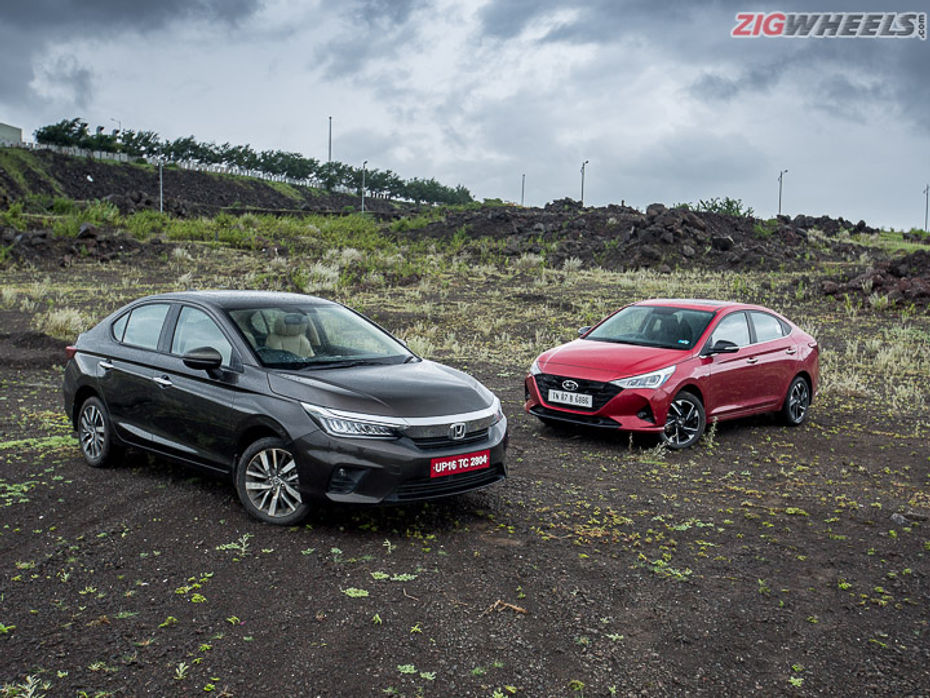
This comparison between the 2020 Honda City and the Hyundai Verna is exciting because these two cars are different in so many ways! Be it in terms of size, attitude or even the powertrains they pack. Yet, they cater to the same audience. On one hand we have the City automatic which has a conventional 1.5L engine mated to a comfort-oriented CVT transmission, while the Verna has a torquier turbo petrol mated to a dual clutch transmission. So this test is all about naturally aspirated vs forced induction, CVT vs DCT.
In this test we will find out which one is the fastest and the most exciting to drive. Apart from that we are also going to critique these cars on their styling, in-car ambience, practicality and the all important rear seat experience.
Sporty vs Subtlety
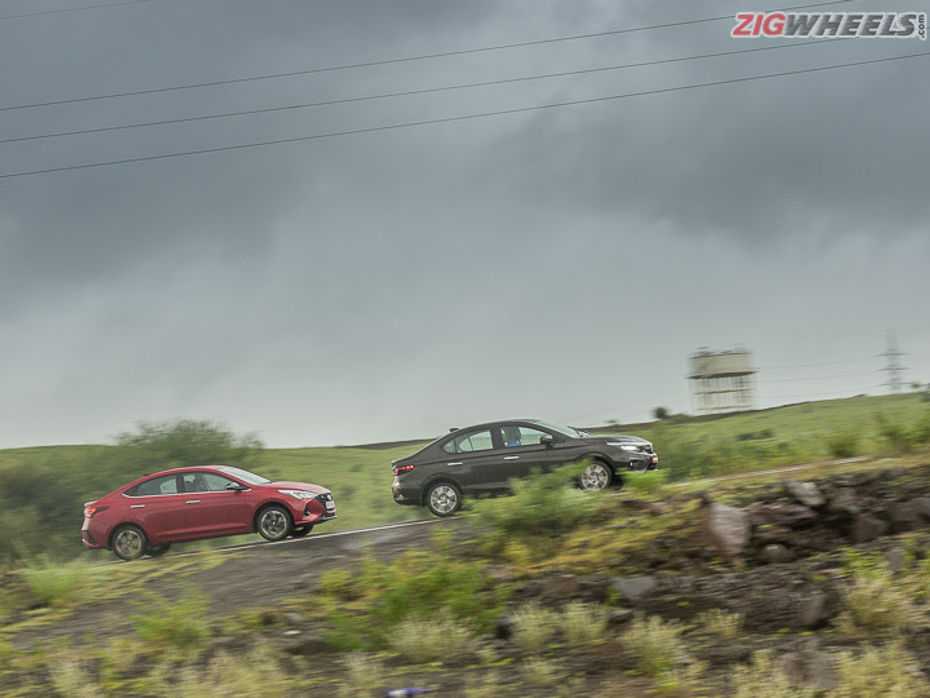
Clearly both these cars are extremely stylish but in their own way. Where the Honda City with its smooth creases is all about elegance, the facelifted Verna on the other hand looks lean, mean and sporty.
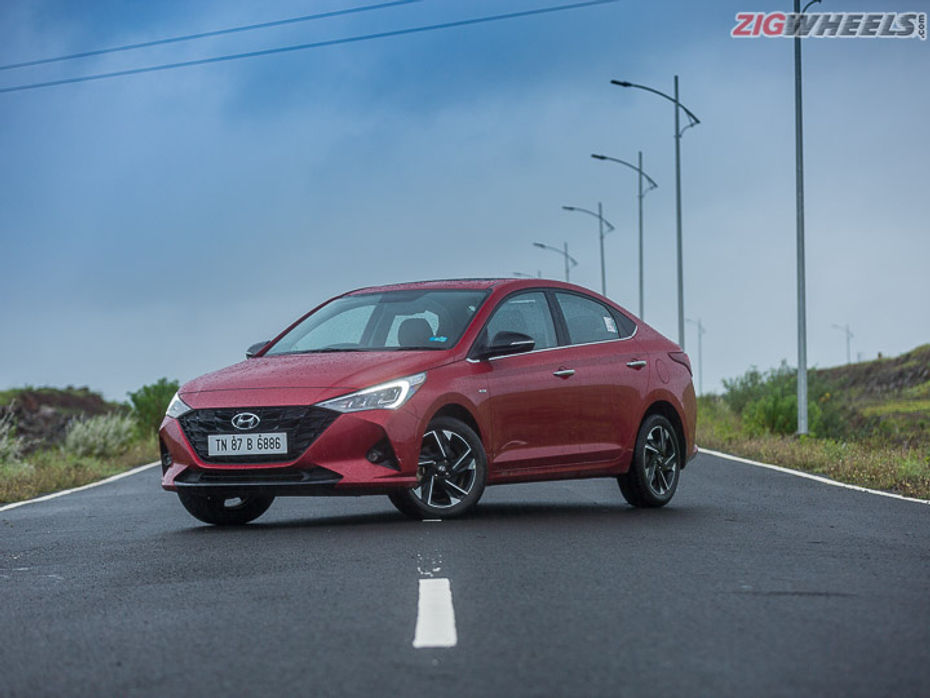
As compared to the normal variant of the Verna, in the turbo version you get no chrome at all! Instead the grille and the faux diffuser at the back are finished in sportier gloss black. The Verna in fact is more than 100mm shorter than the City but has the same wheelbase. That combined with the swooping roofline, makes it look athletic and raring to go! While we can’t really find flaws in the way the Verna looks, I am not too sure of the design element on the rear bumper. The hexagonal dotted graphics look aftermarket and they seem to have melted. Thankfully this design element is just limited to the Turbo version of the Verna.
|
Dimensions |
Honda City |
Hyundai Verna |
|
Length (mm) |
4549 |
4440(-109) |
|
Width (mm) |
1748 |
1729(-19) |
|
Height (mm) |
1489 |
1475(-14) |
|
Wheelbase (mm) |
2600 |
2600 |
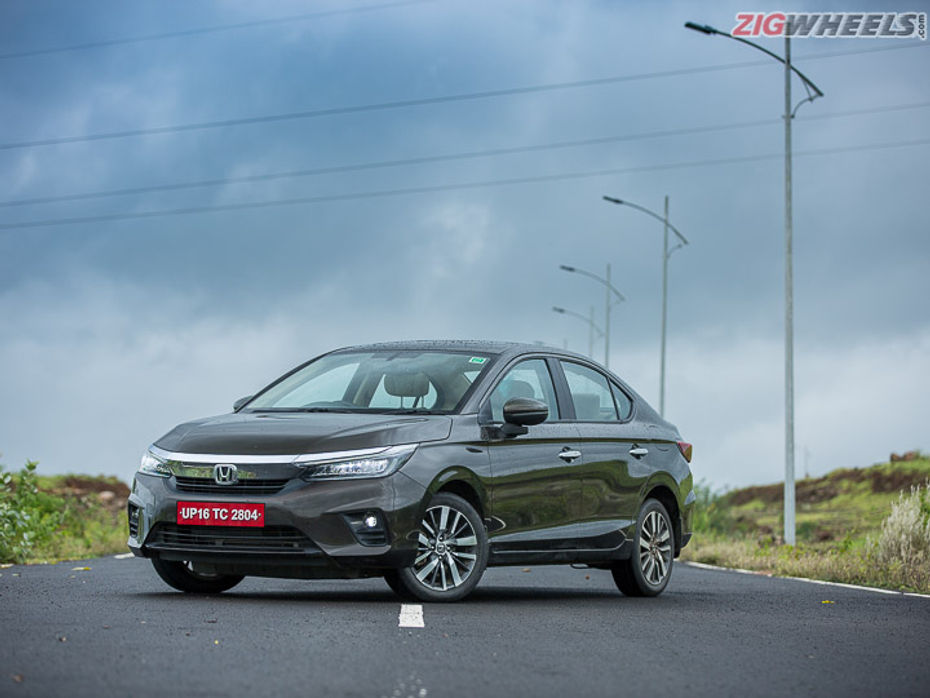
The City on the other hand is clearly a size bigger and looks more grown up too. It looks like a mini Accord - long, elegant and understated. Honda has increased the length of the new City by 109mm but the wheelbase at 2600mm remains the same. As a result, the new car has massive overhangs and you have to be mindful of not scraping the chin while approaching big speed breakers. The City has a flowing silhouette thanks to the deep crease that connects the headlamp and the tail lamps. But the 16-inch alloy wheels do look a bit small and the 175 section tyres look terribly narrow on a car this big. You also might ask where is bling, except for that massive chrome moustache up front? Well the bling is in the City’s lighting system. The all-LED headlights are beautifully detailed and even the integrated turn light strip looks fantastic. The fog lamps are LED too, so are most of the bulbs used in the tail lamps. Honda’s love for LED doesn’t end here….
Cabin Ambience
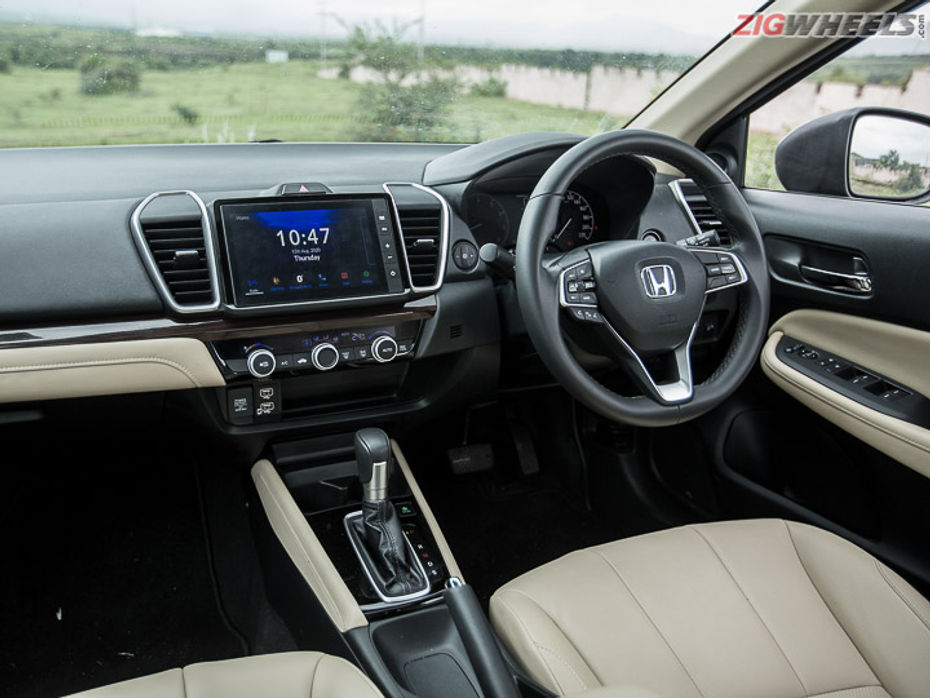
Even the interior lighting on the Honda City is all LED! But thankfully the City doesn’t have to rely on just that to grab your attention because the dash layout is really attractive and has a floating design theme. This design language also helps make the cabin look wider, but the most surprising bit is the quality.
Clearly it is a huge leap forward over the old car and things like the soft touch leather panel above the glovebox and the satisfying clicks from the aircon knobs gives it an air of quality that the old City never had. Yes you do find some cheap bits like the plastic around the power window switches, but other than that the new City feels premium and actually a step better than the Verna! Even the instrumentation of the City looks classy as compared to the gimmicky all digital dials on the Hyundai. The conventional speedometer dial is easy to read and the digital display for the tacho and other car functions like trip computer and TPMS just looks fantastic.

The Verna’s cabin too is of high quality. The dashboard plastic graining is well executed and it doesn’t feel cheap wherever you touch or look. But compared to the City the dash layout does look a bit too simple and it also doesn’t get any soft touch materials. The all-digital dials are very sporty looking, but it’s layout won’t be to everyone's taste. Hyundai should have given an option of changing the theme on these for sure.
Comfortable Insides
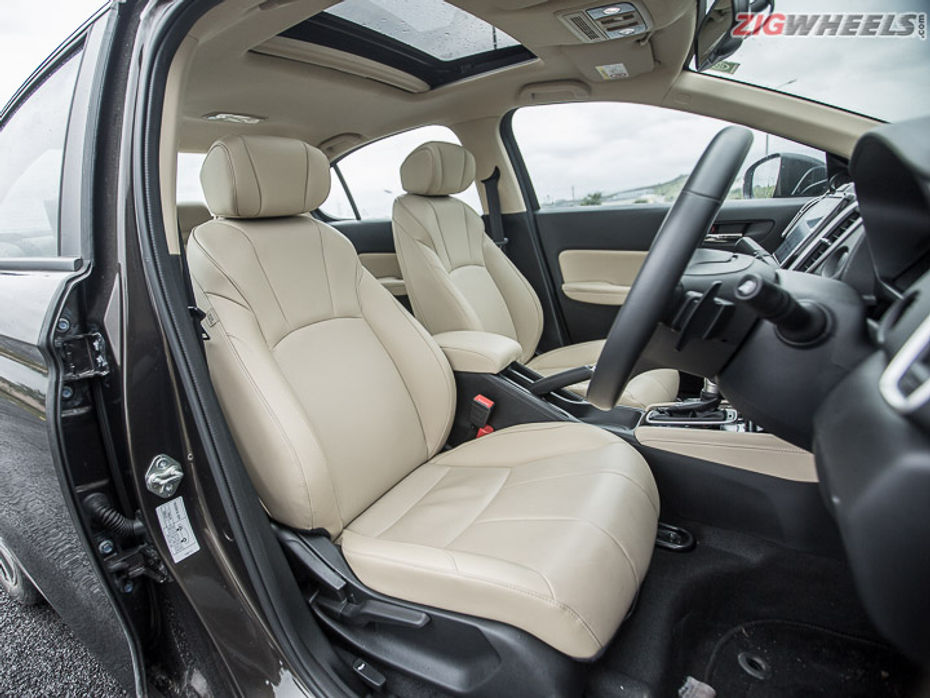
When it comes to front seats, the Honda City has the more comfortable and accommodating buckets. You sit quite high up and thanks to the thin A-pillar you get a great view upfront. There are two problems however. With a six-foot tall person up front there is just about enough headroom, so for anyone taller than that it might be an issue. Also, if you prefer an upright driving position, the backrest locks in at a bit of a reclined angle which is really annoying.
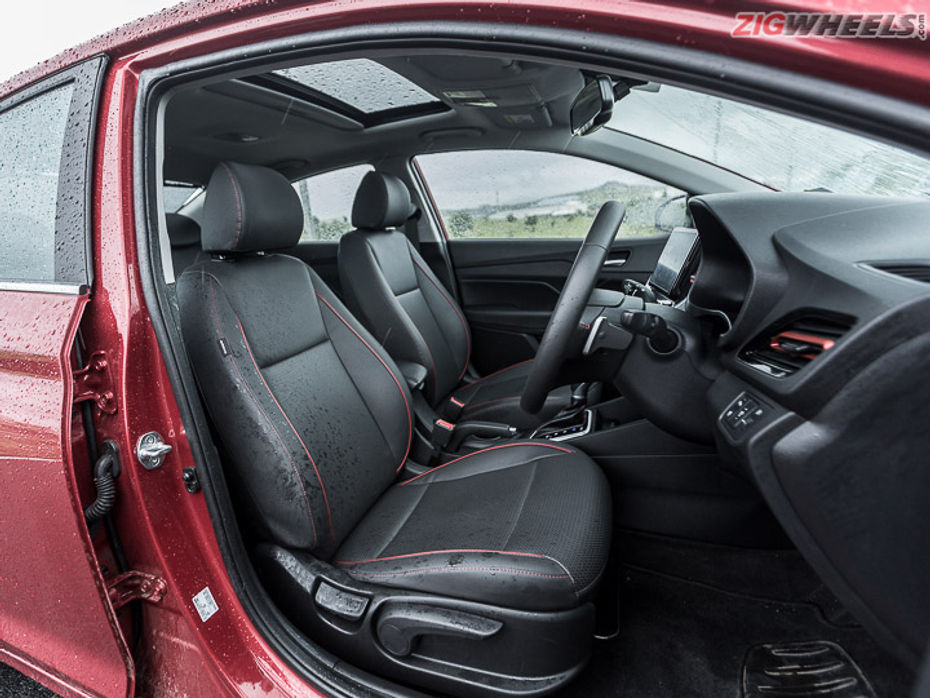
There are no such issues in the Verna. You get a great range of seat height adjustment. Thanks to which you can either set the seat really low if you want to feel like a boy racer, or set it high up. Front seats are also ventilated which is a boon in hot weather to cool down the leather upholstery. On the downside the seats are a bit narrow and not as accommodating as the City’s.
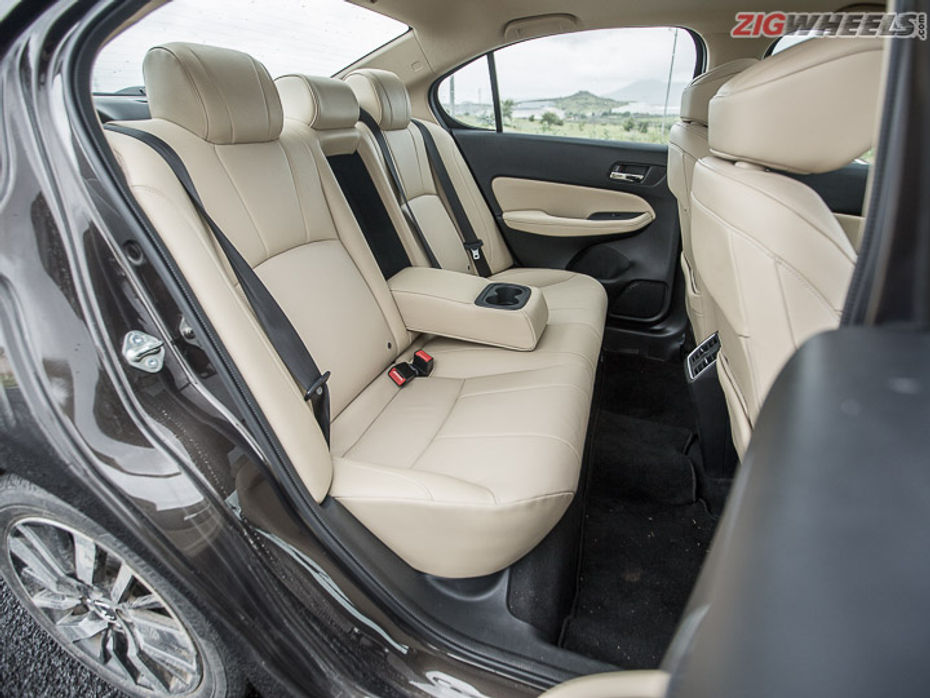
But where the Honda City is much better is when it comes to rear seat comfort. Knee room is humongous, and the dual tone interiors gives it an airy ambiance. The bench itself is comfy with enough under thigh support and the slightly reclined backrest ensures you can stretch and relax in the back.
Rear Seat Space
|
Honda City |
Hyundai Verna |
|
|
Ideal Kneeroom |
820mm |
660mm(-160mm) |
|
Shoulder Room (mm) |
1290mm |
1315mm(+25mm) |
|
Headroom (mm) |
895mm |
875mm(-20mm) |
In the Verna’s backseat there isn’t much space to stretch and relax. In fact by sedan standards, the Hyundai’s rear seat is cramped. Compared to the Honda City it is down by a massive 160mm of knee room, and the stylish sloping roofline results in less headroom too. Even the Turbo variant’s all-black cabin and the high window-line gives you a hemmed-in feeling.
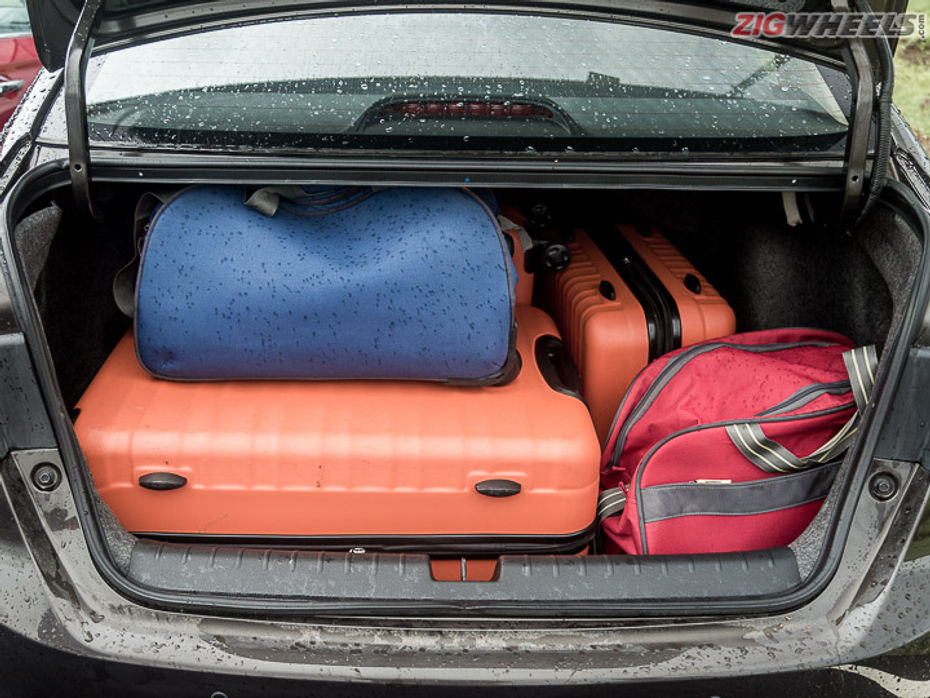
On the practicality front, you get more storage spaces in the Honda City’s cabin. Even its boot is larger and also more usable. We were able to fit all three of our suitcases and two soft bags with ease in both the cars. The difference being the Honda City had room for a lot more!
Feature Rich
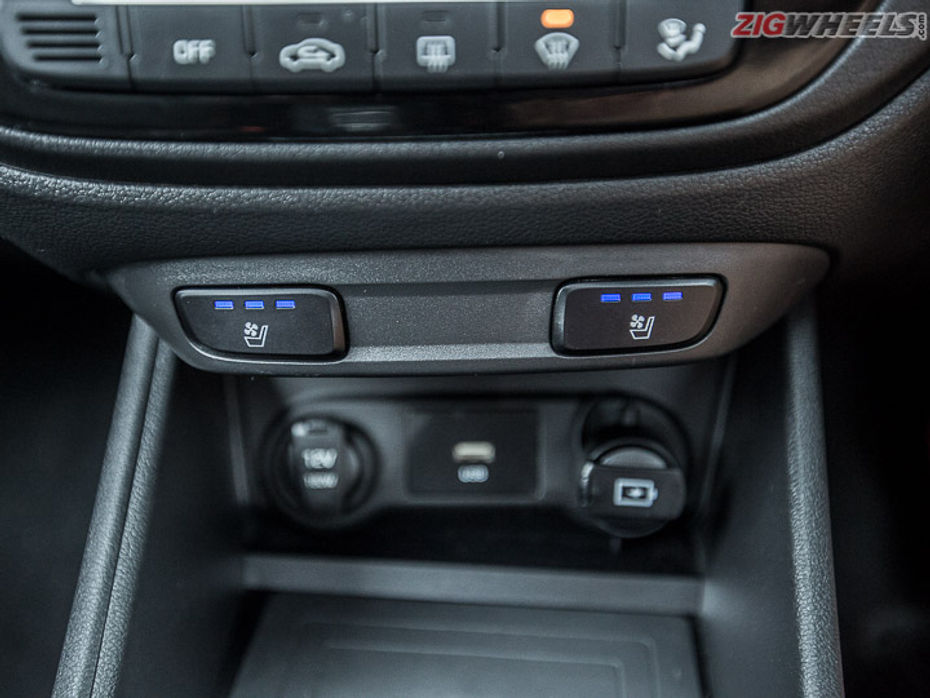
Being a Hyundai the Verna it is loaded with features. You get unique features like front parking sensors, ventilated front seats and even the 8 inch infotainment display is as good as a high end tablet. The touch response and graphics are top notch and the presence of physical buttons makes it easy to use on the move.
The same can’t be said of Honda City’s system. Don’t get us wrong, there is nothing wrong with the screen resolution or the touch response. But compared to the Verna’s, the functions aren’t as well laid out and also the physical buttons are tiny and more difficult to locate.
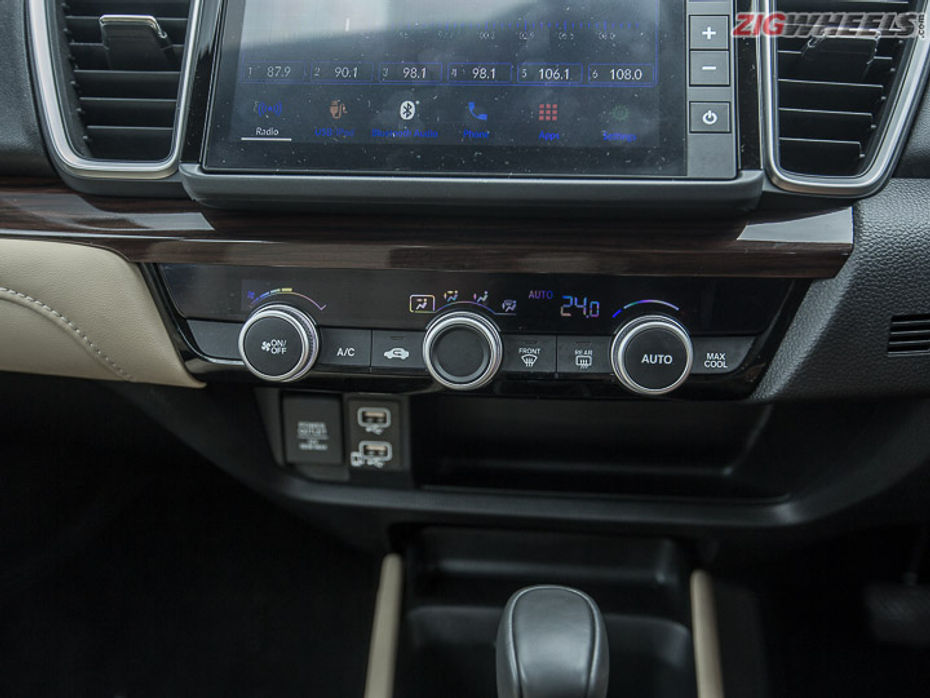
In terms of unique features the Honda City does get a lane watch camera which is useful to spot cars, bikes, cyclists or people in your blind spot while turning left. But the execution is not that great. Especially if you are using navigation! The camera replaces the navigation and hence you might end up taking the wrong left turn! Both these cars also get connected car tech. By which you can get geofence alerts, remote lock unlock and turn the AC on.
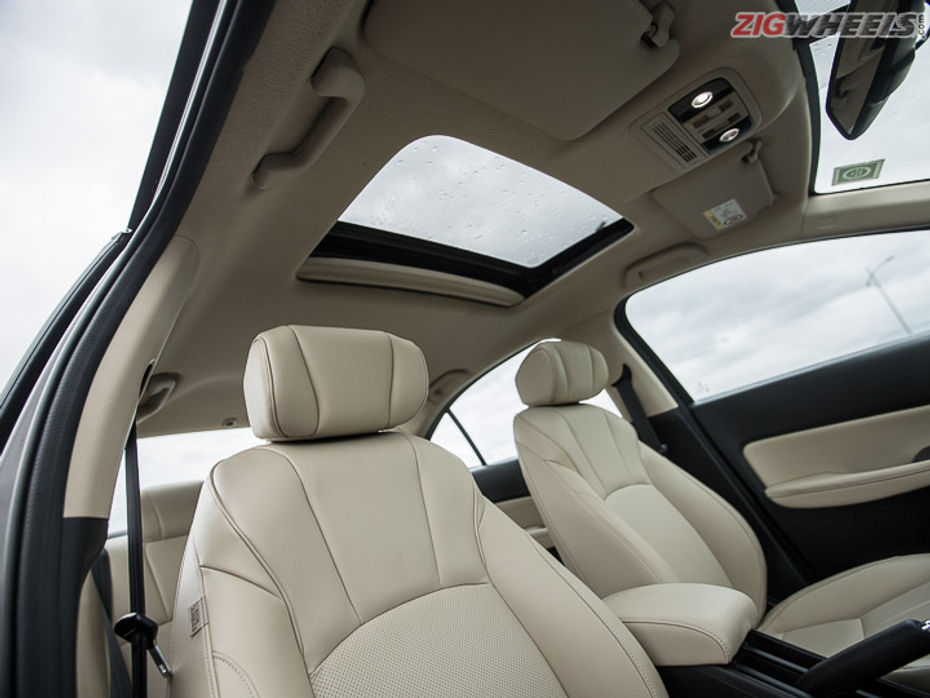
In addition to this, the City offers its segment's first Amazon Alexa connectivity. No, it won’t make the car go out and pick up deliveries for you but it gives you access to a wide range of functions. Essentially, through voice commands given to your Amazon assistant, you can control a range of functions like check fuel level, ask for your car's location and also turn your car's AC on.
In terms of safety both these cars are closely matched. In the top end variant you get 6 airbags, ABS and ESP as standard.
Now coming to the important question, turbo petrol with DCT versus naturally aspirated with CVT. So which car will come out on top?
Practical Bits
Engine Specification
|
Honda City (Wet conditions) |
Hyundai Verna |
|
|
Engine |
1.5L, 4-Cyl Petrol |
1.0L, 3-Cyl Turbo-Petrol |
|
Gearbox |
7-Step CVT |
7-Speed Dual Clutch Auto |
|
Power |
121PS @ 6600rpm |
120PS @ 6000rpm |
|
Torque |
145Nm @ 4300rpm |
171.6Nm @ 1500-4000rpm |
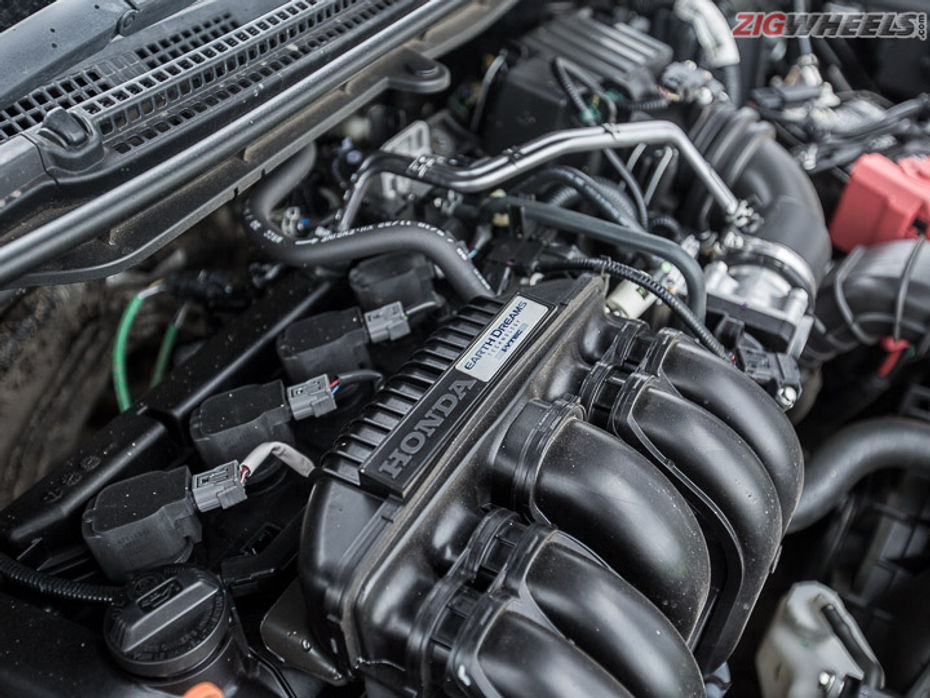
Clearly the City has the advantage in terms of displacement and it shows at low speeds. As soon as you go on the throttle the Honda City moves forward with a good punch, but at the same time it feels smooth. This smoothness is not only down to the engine's power delivery but also because of the CVT automatic. Given any amount of throttle input the acceleration remains jerk free but what really surprises you is the fact that in normal driving you don't experience the stretched effect that is typical of most CVT gearboxes. This gearbox actually mimics a torque converter transmission thanks to it having defined gear ratios as it is a step CVT. Even out on the highway, where we expected this gearbox to struggle, it doesn't! Thanks to the tall gearing it feels relaxed while cruising and as and when required, it is also quick to drop the engine in the sweet spot if you want to execute a quick overtake.
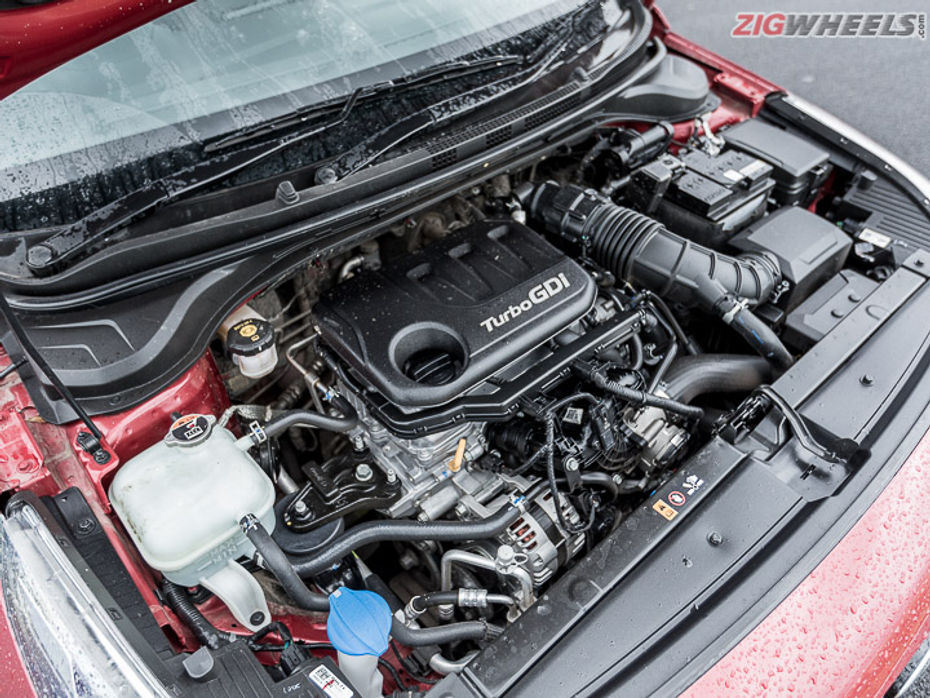
Although the Hyundai Verna has a really strong spec sheet with the turbo petrol and DCT transmission, in terms of everyday driving it doesn't feel as effortless as the Honda City especially at low speeds. When you start moving from standstill with a light throttle input, the Verna doesn’t feel particularly quick because of the engine’s turbo lag. Once the engine crosses 2000rpm it suddenly lunges forward as the turbo spools up, which makes city driving a bit jerky. It's not only the engine's turbo lag that is irritating in the city, even the gearbox feels a bit lethargic. It upshifts rapidly to aid fuel efficiency but if you need a quick burst of acceleration it pauses for a bit before finding the right gear to move ahead swiftly.
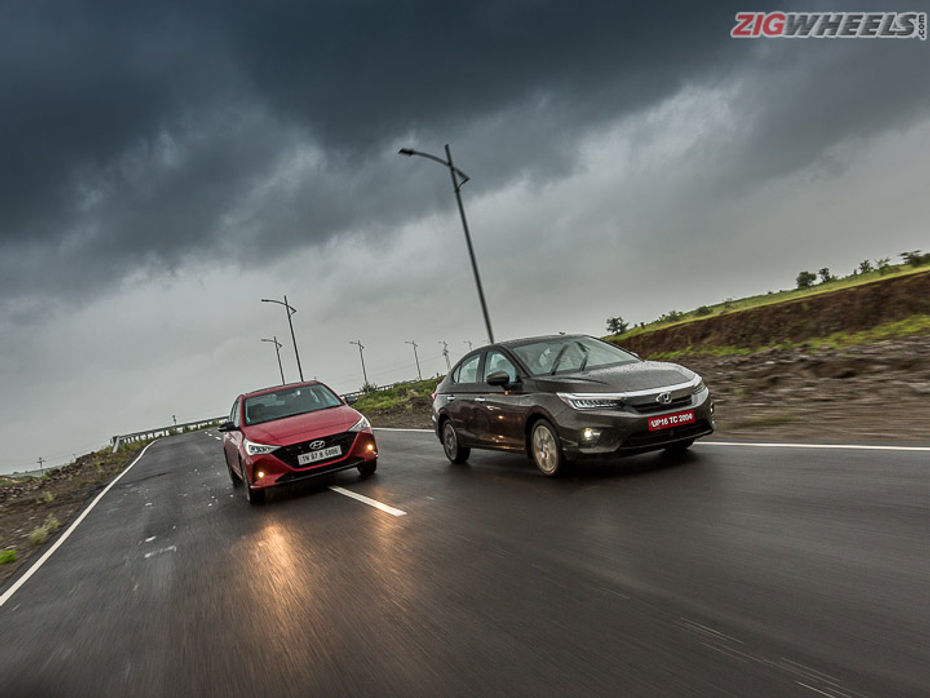
The slowness of the gearbox might also be down to Hyundai detuning it for longevity, which has been a problem of dual clutch transmissions in the past. But out on the highway this motor's strong mid-range makes driving really fun. You can cruise really well on the highway and even overtakes are easy. Where the Verna is clearly better than the City is in terms of engine refinement. At low speeds or even when you rev the Hyundai’s three cylinder engine out it feels composed and makes for a really relaxing drive. The City’s motor on the other hand is much louder and above 3000rpm the engine sounds actually gets quite intrusive.
Tested Fuel Efficiency
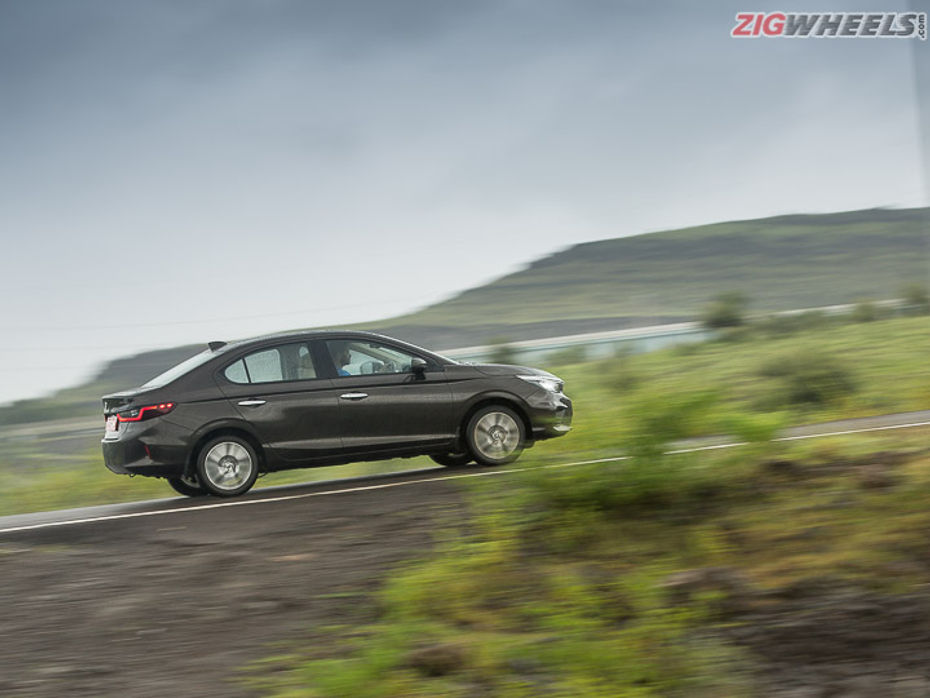
|
Honda City CVT |
Hyundai Verna Turbo DCT |
|
|
City |
16.28kmpl |
12.25kmpl |
|
Highway |
20.62kmpl |
18.04kmpl |
The Verna turbo doesn't only lag behind the City in terms of ease of driving but also when it comes to fuel efficiency. The Honda proved to be 4kmpl and 2.5kmpl more efficient in our city and highway cycles respectively. That's a huge margin and could be a deal breaker in light of the fuel prices skyrocketing.
Ride Quality
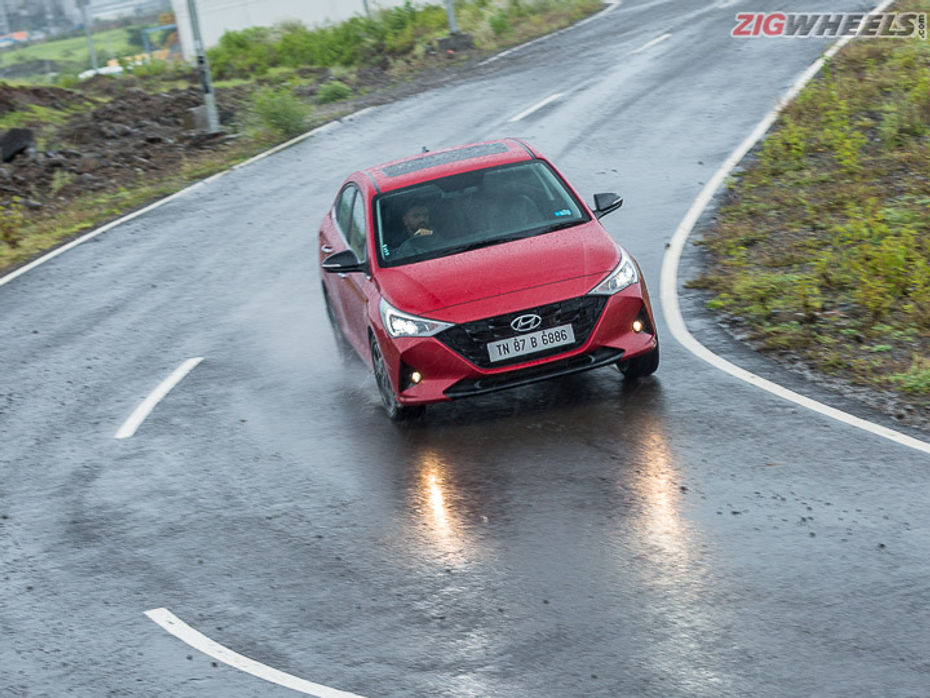
Just like the engine, even the Verna's cabin insulation is top-notch. There's hardly any wind noise or tyre noise that seeps inside the cabin. The same can't be said about the ride quality though. The Verna feels noticeably stiffer as compared to the City. So over less than perfect surfaces you do feel some jolts inside the cabin. Even out on the highway the ride never feels quite settled.
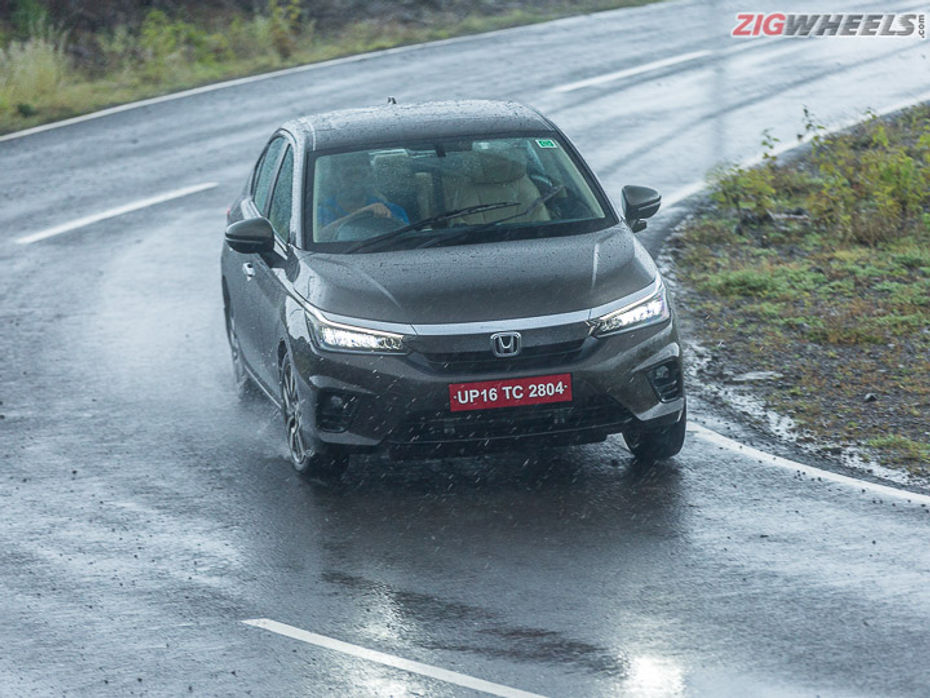
With the City, Honda has nailed it in terms of ride comfort. The biggest of potholes are dealt with ease. It doesn’t feel too soft or too stiff and even over rough road surfaces it takes it really well. There's a good amount of wheel travel and the beauty of it is even after it's done going through the rough roads it settles back quickly. Out on the highway the Honda feels noticeably more comfortable than the Verna as it feels less harsh and a lot more settled.
Fun to drive
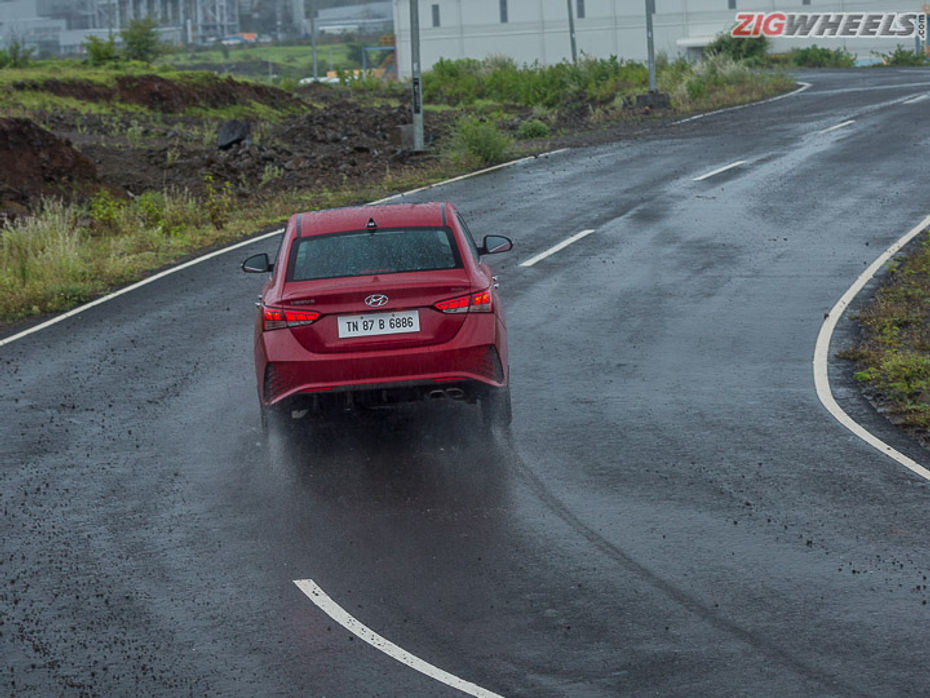
Now that we are done with the practical bit, let's come to the more fun stuff. In terms of outright performance we were expecting the Honda City to be much slower than the Hyundai Verna.
It is slower, but only just! In the 0-100kmph sprint the City’s 1.5-litre motor lags behind the Verna Turbo by just 0.7 seconds. Considering the Honda City was tested in damp conditions the gap will be even smaller. In fact in the drivability test, the City is actually quicker than the Verna thanks to the more responsive CVT gearbox. Yes this CVT gearbox does show some limitations especially when you're pushing the engine all the way to the red line. It feels a bit stretched and disconnected.
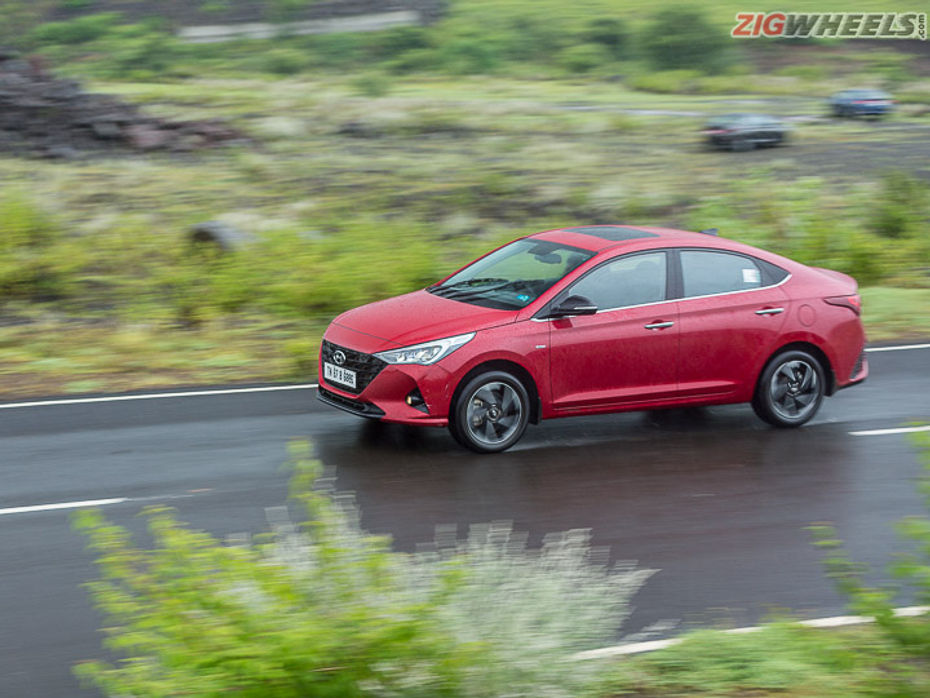
Talking about the Verna's fun to drive factor, the biggest highlight is definitely the engine. It's got so much torque and the motor is free revving too, which makes visits to the redline a fun affair. But this potent engine is let down by the DCT transmission once again. It's a little slow to downshift and even when you're using manual mode it doesn't respond instantly.
Tested Performance
|
Honda City (Wet conditions) |
Hyundai Verna |
|
|
0-100kmph |
12.74 seconds |
12.03 seconds |
|
20-80kmph (Kickdown) |
7.25 seconds |
7.78 seconds |
|
Braking 100-0kmph |
44.64 metres |
42.22 metres |
When it comes to handling, the Honda City’s chassis is agile and feels more willing to change directions as compared to the Verna’s. The steering too is direct and thanks to the supple suspension setup it doesn't get unsettled by mid corner bumps. The Verna too feels agile as the chassis feels neutral in the way it responds. But the spoilsport is the steering which is a little vague and doesn't give you much confidence. Even the brake pedal on the Verna feels soggy and under hard braking the car doesn’t feel as stable as the Honda City.
Verdict
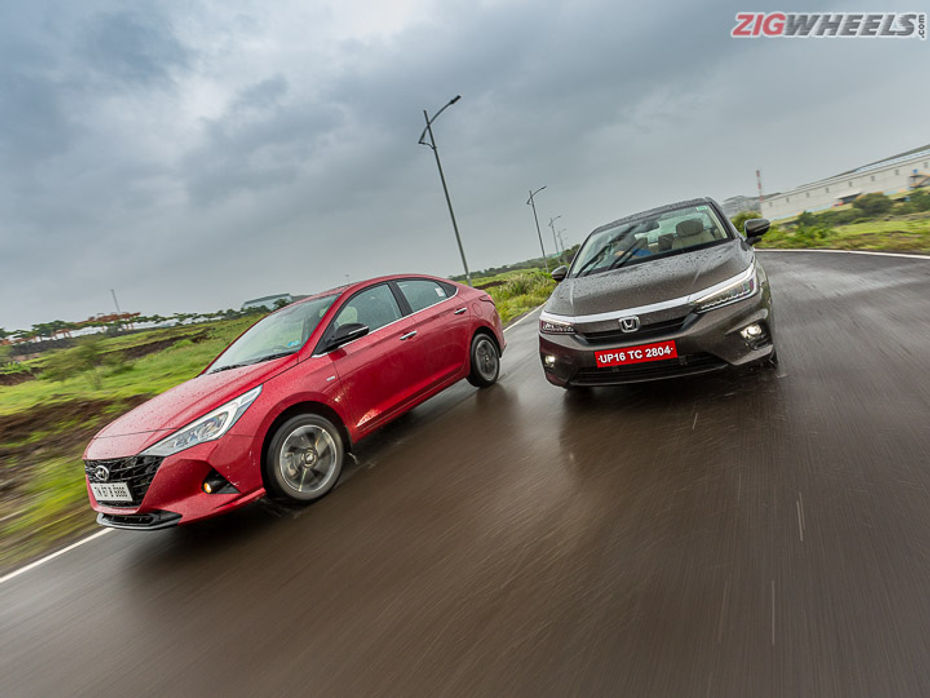
So which car wins this test? Let's get rid of the pricing bit first. Thanks to Honda pricing the new City almost the same as the old car and Hyundai increasing the price of the facelifted Verna, the City is just Rs 45,000 more expensive. Considering these cars cost well in excess of Rs 10 lakh, the diminutive price difference is not going to be a determining factor in the result of this test.
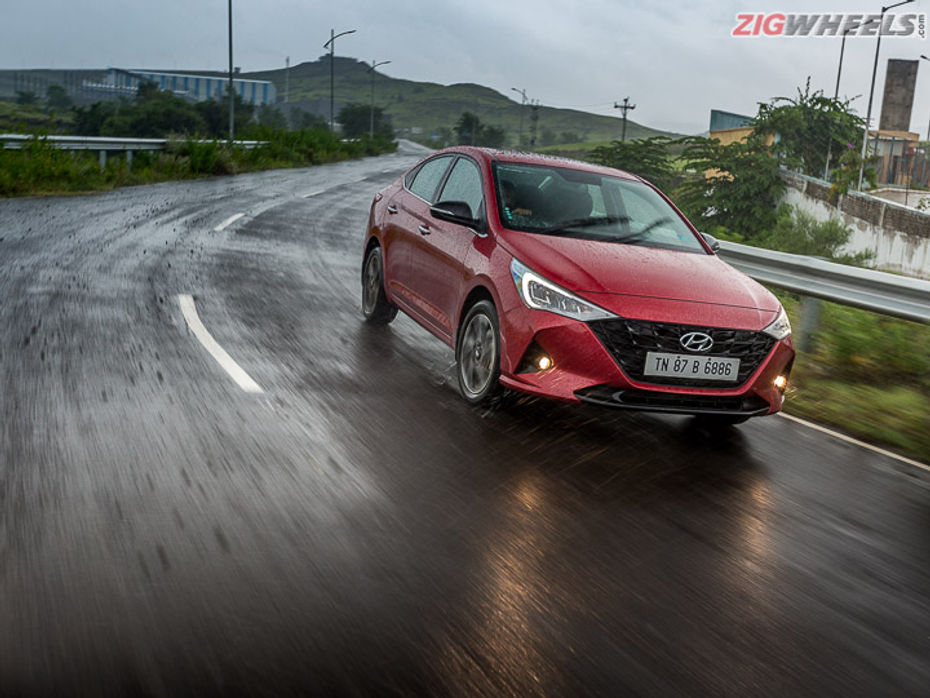
The Hyundai Verna is a very likable car and has a lot of character in the way it looks and feels. It is also better than the Honda City when it comes to cabin sound insulation. Iit offers you more features and the touchscreen infotainment system feels more modern. But other than that, as a practical choice the Honda City offers a lot more. It offers much more space and comfort, has a more supple ride quality, is extremely easy to drive and most surprisingly, it feels more premium on the inside as compared to the Verna.
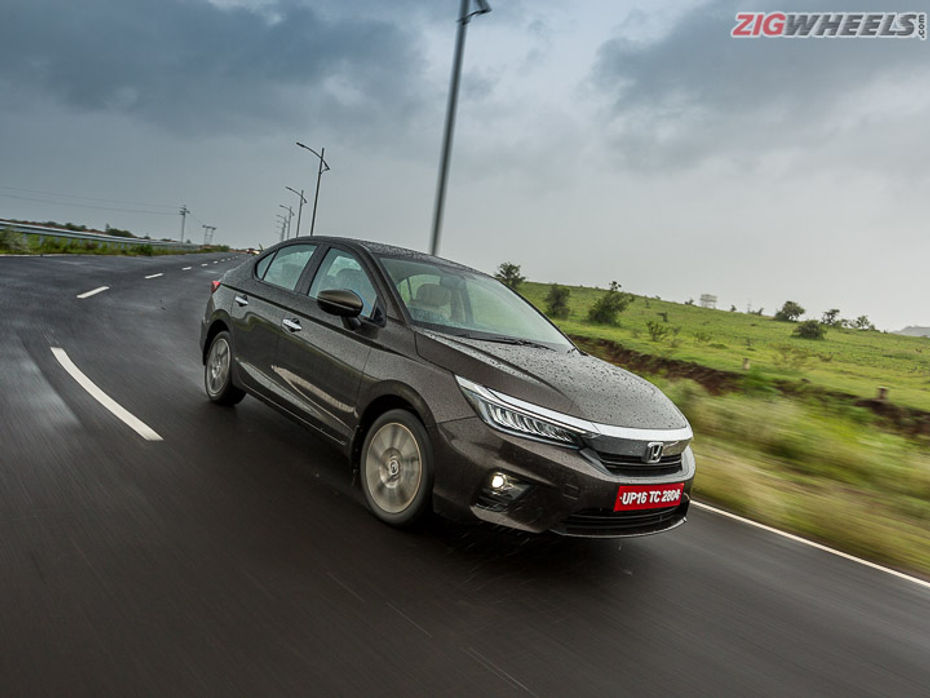
But what about fun to drive? Even in this regard the Honda delivers a wholesome experience as compared to the Hyundai. Yes the Verna clearly looks sporty and it's got that turbo petrol engine which gives you a lot of torque and it's fun to drive. What lets it down however is the slow shifting DCT transmission and even the steering feels a bit vague. This is where the Honda City really surprised us. We expected the Verna to leave it in the dust in terms of straight-line performance. But to our surprise it was just a tiny bit slower and in the real world they are actually neck and neck. Even in terms of handling the City clearly has the upper hand thanks to having a more willing chassis and even the steering feels more direct. So the Honda City not only will appeal to your family but will satisfy the needs of an enthusiast as well.

Honda’s Electrified City Goes On Sale In Thailand

The Honda City Gets A Hatchback Sibling In Thailand

🚗 Honda City 2020 vs Hyundai Verna Automatic Comparison Review |...
India's largest automotive community